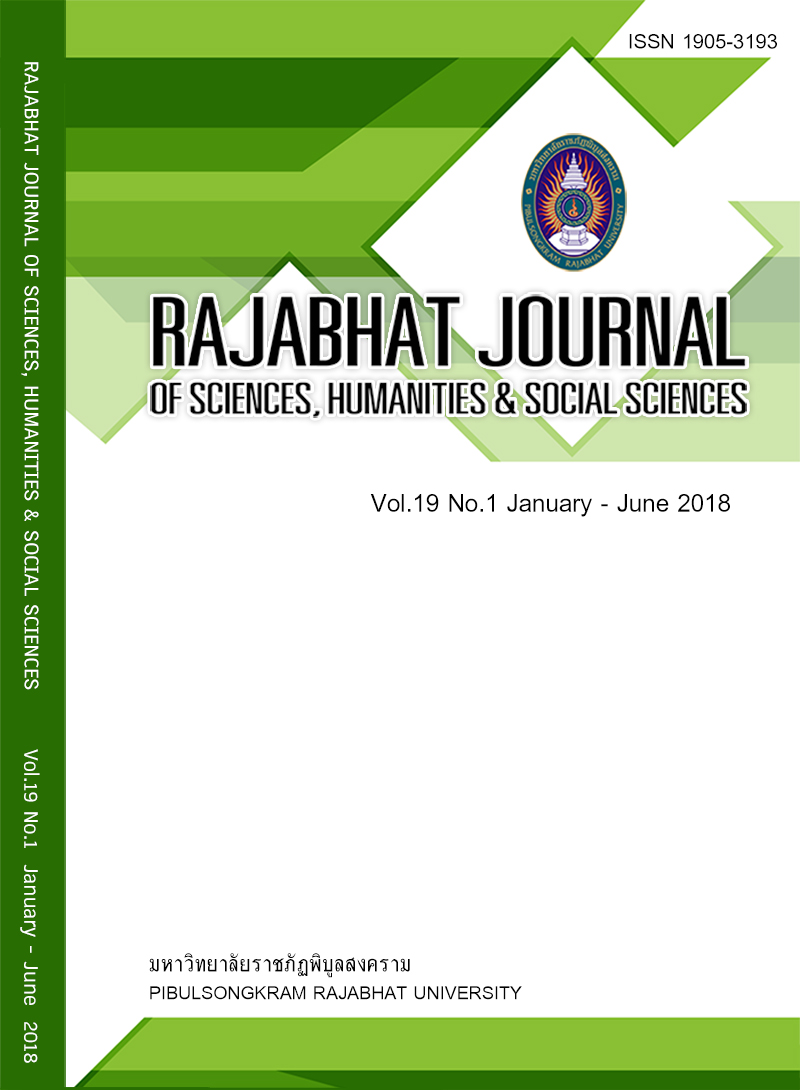THE EFFECT OF TYPE AND AMOUNT ON FORMING PLASTICIZER AND PROPERTIES OF EDIBLE FILM FROM CORN HUSK
Keywords:
edible film, corn husk, plasticizerAbstract
The purpose of this research was to study the plasticizer on edible film- forming from waxy corn, sweet corn and flint corn by adding 3 types of plasticizer which were composed of glycerol, sorbitol and glycol with the concentration at 20, 25 and 30% and analyzed physical and chemical properties. The results found that edible film from 5 grams of flint corn husk powder was added glycerol at concentration 30% could be the best form that was 0.79-0.93 mm thick. The moisture content was 9.61-18.50%. The solubility valued 66.91-77.35% and the water vapor transmission rate (WVTR) was 420.07-500.31 g/m2hr. Finally, the edible film from corn husk was applied for shelf life extension by coating strawberries and compared with the non-coating as the control group. It was found that the coating strawberries for 3 days had withered and soften without microorganism spoilage.
References
Amarante C, Banks NH, Ganesh S. Relationship between character of skin cover of coated pears and permeance to water vapor and gases, Postharvest Biology and Technology. 2001; 21: 291-301.
Bourtoom T. Development, Characterization and Application of Edible Film from Straches. Research report, Department of Packaging and Materials Technology, Prince of Songkla University, 2004.
Bourtoom T. Edible Films from Water Soluble Protein in Surimi Wash Water. Doctor of Philosophy (Food Technology), Graduate School, Chulalongkorn University, 2003.
Bustillos RJA, Krochta JM. Water vapor permeability of caseinate-based edible films as affected by pH, calcium cross linking and lipid concentration, Journal of Food Science. 1993; 58: 904-907.
Charawae A. Development of Edible Film from “Kluai Nam Wa”. Master of Science (Packaging Technology), Kasetsart University, 2007.
Ektharmasut K. Effect of zein hydrolysate on physical properties of edible konjac film, University of the Thai Chamber of Commerce Journal. 2010; 30(1): 81–89.
Hongkulsup C, Uthairatanakij A, Borompichaichartkul C. Edible film from konjac powder and applications on coating ‘Tup Tim Jun’ java apple, Journal of Agricultural Science. 2007; 38(6): 208 – 211.
Jinaphan N, Sangsuwan J, Sutthasupa S. et al. Properties of Carboxy Methyl Cellulose (CMC) film from rice straw pulp, Journal of Agricultural Science. 2012; 43(3): 616-620.
Kanchanatecha P, Pathumthanasup C, Tattawasart A. et al. Effect of plasticizer on mechanical and water resistant properties of alcoholic – alkaline treated Mung Bean starch films, The 12th Graduate Research Conferences. 2011; 1086-1095.
Katsa S. Physiology and Postharvest of Fruits and Vegetables. Nakhonpathom: Printing and National Training Center; 1985.
Krochta JM. Proteins as Raw Materials for Films and Coating: Definitions, Current Status, and Opportunities. Protein-Based Films and Coatings. CRC Press, Florida; 2002.
Lamul W, Nuttapol P, Prayoon J. Effects of drying temperatures and glycerol concentrations on properties of edible film from konjac flour, Journal of Medical and Bioengineering. 2014; 3(3): 171 – 174.
Oh JH, Baowu W, Perris DF. et al. Characteristics of edible films made from dairy proteins and zein hydrolysate cross-linked with transglutaminase, International Journal of Food Science and Technology. 2004; 39: 287-294.
Phakdeevaraporn, S. Production of Edible Film From Rice Flour and Tapioca Starch. Master of Science (Food Science), King Mongkut’s Institute of Technology Ladkrabang, 2001.
Pisamai J, Yongkasikan A, Sangwain C. et al. The study of edible film from mango power, Journal of Agricultural Science. 2012; 43(2): 89-92.
Pradtanapian M. Biobased food packaging, Food Journal of Thailand, 2004; 6(34): 11–15.
Psomiadou E, Arvanitoyannis I. Yamamoto N. Edible films made from natural resources Micro Crystalline Cellulose (MCC), Methyl Cellulose (MC) and corn starch and polyols-part2, Carbohydrate Polymers, 1996; 31(4): 193–204.
Rhim JW, Wu Y, Weller CL. et al. Physical characteristics of a composite film of soy protein isolate and propyleneglycon alginate, Journal of Food Science. 1999; 64: 149-152.
Sukkasem T, Buranachokpaisan K, Anukulwattana K. Mechanical and physical properties of edible film from corn husk waste (Zea mays Kinn.), Journal of Agricultural Science. 2017; 45(1): 1222-1228.
Suwannarat P, Sutthiparinyanont S, Chitropas P. Effect of co-film former and plasticizer on physical and mechanical properties of Tammarind kernel films, The 15th Graduate Research Conferences, 2014; 1522-1532.
Uttapap D, Jalearnkul. Chemical Properties of Carbohydrates Hydrocolloids and Industrial Application, 2012. Available at: https://eu.lib.kmutt.ac.th/elearning/Courseware/BCT611 /chapter4. Accessed January 15, 2016.
Wongwutisaroj S. Water Consumption of Maize. 2014. Available at: https://corninfo.blogspot.com/2014 /11/blog-post_8.html. Accessed December 10, 2016.
Downloads
Published
How to Cite
Issue
Section
License
Each article is copyrighted © by its author(s) and is published under license from the author(s).










